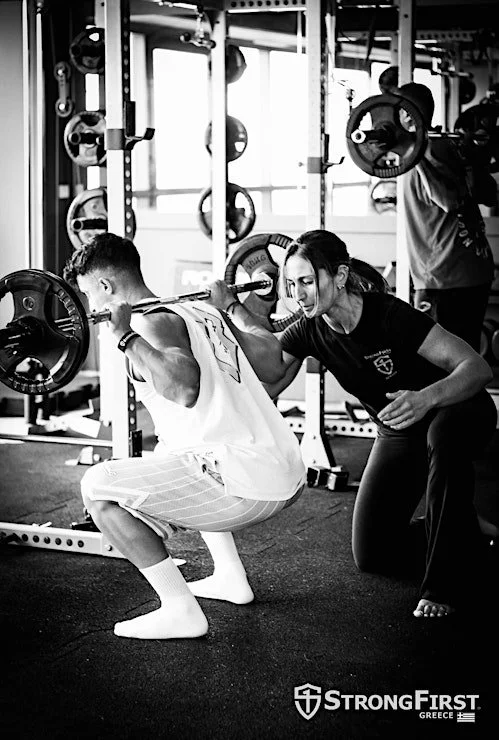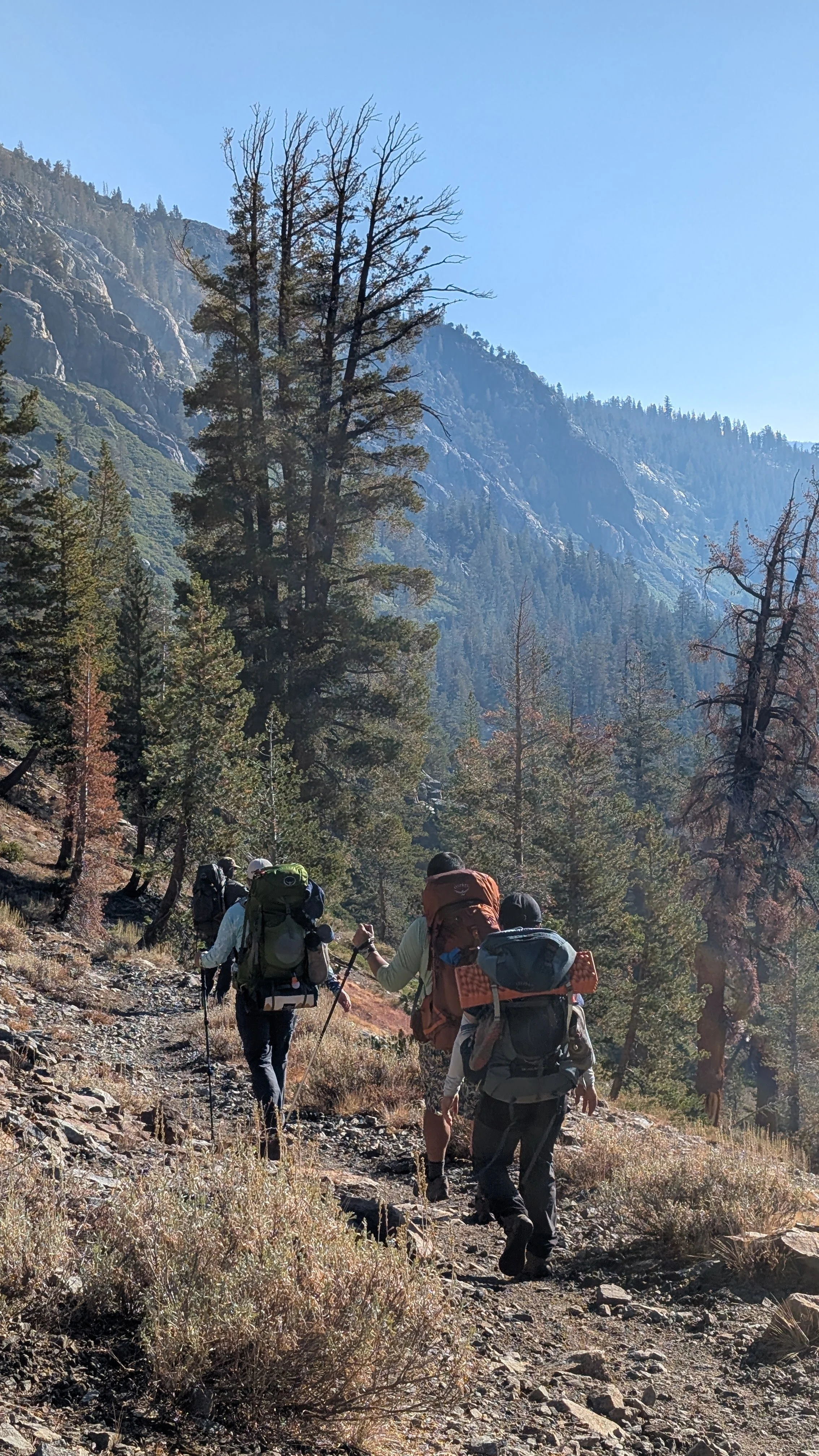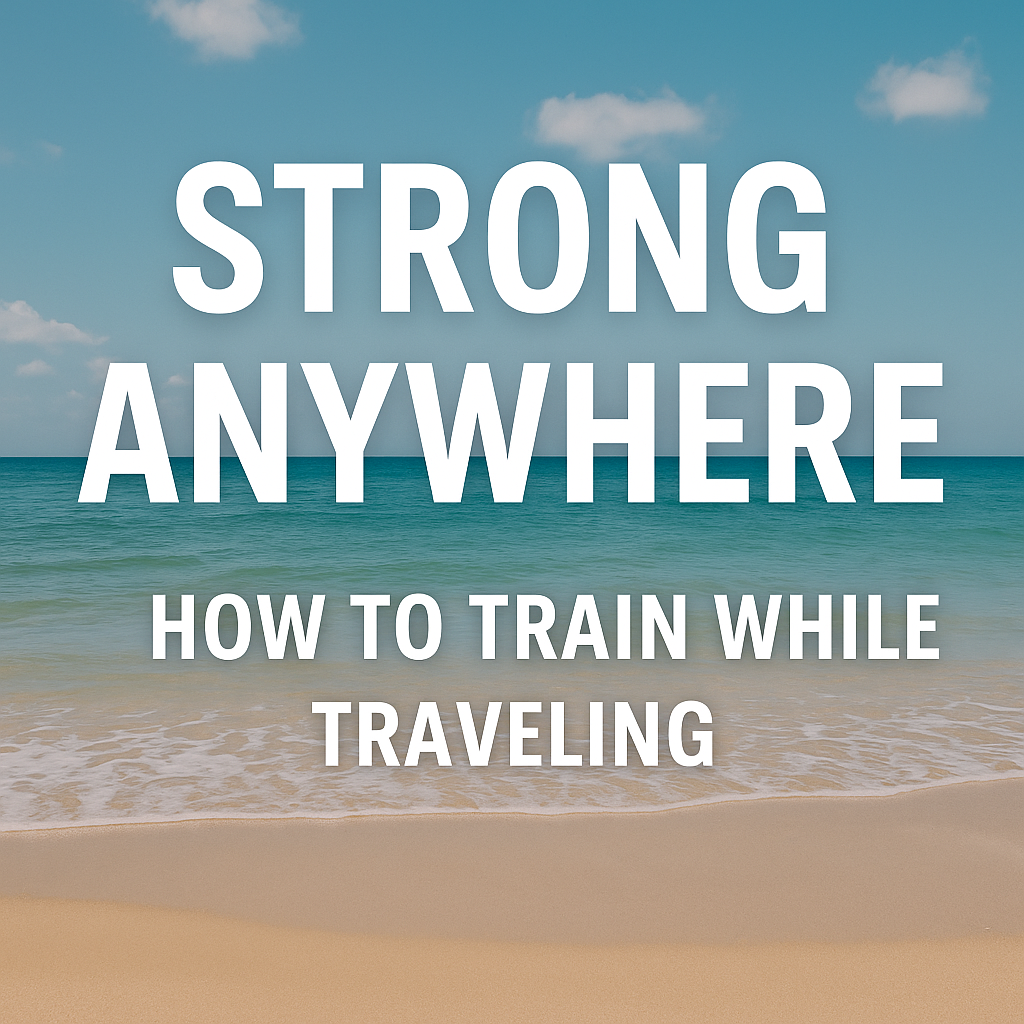Barbell Squat for Beginners: Form Tips & High vs Low Bar
This month’s Saturday Steel takes the mystery out of the barbell squat so beginners feel calm, safe, and confident under the bar
What is the barbell squat?
A compound strength lift where you sit your hips between your ankles while keeping the bar centered over your mid-foot, then stand back up under control. Two common styles:
High-bar: bar sits higher on the traps; torso is more upright.
Low-bar: bar rests a bit lower on the rear delts; torso leans slightly more, emphasizing hip drive.
Both are great. At OMP, we match the variation to your structure, mobility, and goals—not the other way around.
Barbell Front Squat : (front view, low-bar demo)
Why squat at all?
Real-world strength: legs, hips, and trunk working together for everyday life—stairs, hills, playing with kids, hiking.
Bone density & resilience: smart loading builds durable tissue.
Athletic carryover: better sprint starts, jumps, grappling posture, and rucking.
Kettlebell synergy: goblet squats teach posture and bracing that plug directly into the barbell.
Simple Cues
Set up
Stance: about shoulder-width, toes slightly out.
Root the feet: big toe, little toe, heel—spread the floor.
Bar placement:
High-bar: on the traps—not on your neck.
Low-bar: on the rear-delt “shelf.” Wrists neutral, elbows down/back, lats packed.
Brace & breathe
Breathe behind the shield: small nasal sniff-in to set your brace; ribs stacked.
Wedge under the bar (feet screw in, glutes ready).
On the way up, a short, pressurized exhale through the sticking point.
The rep
Descend with control; let knees track over mid-foot.
Depth you can own (usually just below parallel), then drive the floor away to stand tall—glutes on, ribs still stacked.
Re-organize quietly; repeat.
Common fixes
Knees cave: think “spread the floor” and keep pressure through the big toe.
Heels lift / weight to toes: widen slightly; sit between the ankles; keep bar over mid-foot. Address ankle mobility limitations if needed or elevate heels with a thin plate.
Wrists cranked: adjust grip/bar shelf so wrists stay neutral.
Bar path zig-zags: pack lats, even hand pressure, eyes fixed on a single point.
A beginner-friendly first session (12–15 min)
Empty-bar (or dowel) rehearsal: 3×5 with a 1-second pause at the bottom to feel balance.
Technique sets (light load you can own): 3–4 reps ×3–5 sets.
Between sets: fast & loose and easy nasal breathing to recover.
Always leave 1–2 reps in the tank. Organized reps beat grindy reps—especially while learning.
How your kettlebell work helps
Goblet squat → tall posture, rib stack, knee tracking.
Face-the-wall squat → honest depth and balance.
Grunt (breathing) → sniff-in to brace, grunt to come out the bottom of the squat.
Want to go deeper (and learn high-bar vs low-bar hands-on)?
We’re covering set-up standards, bracing, and both high-bar and low-bar options—with coaching eyes—at our upcoming workshop:













Consistency isn’t magic—it’s frequency, focus, and a plan you can repeat. In this month’s Saturday Steel, we show exactly how often to train to see real change, plus simple ways to make it stick using OMP’s check-ins, coaching, and community. Pick a routine that fits your life and start building strength that lasts.